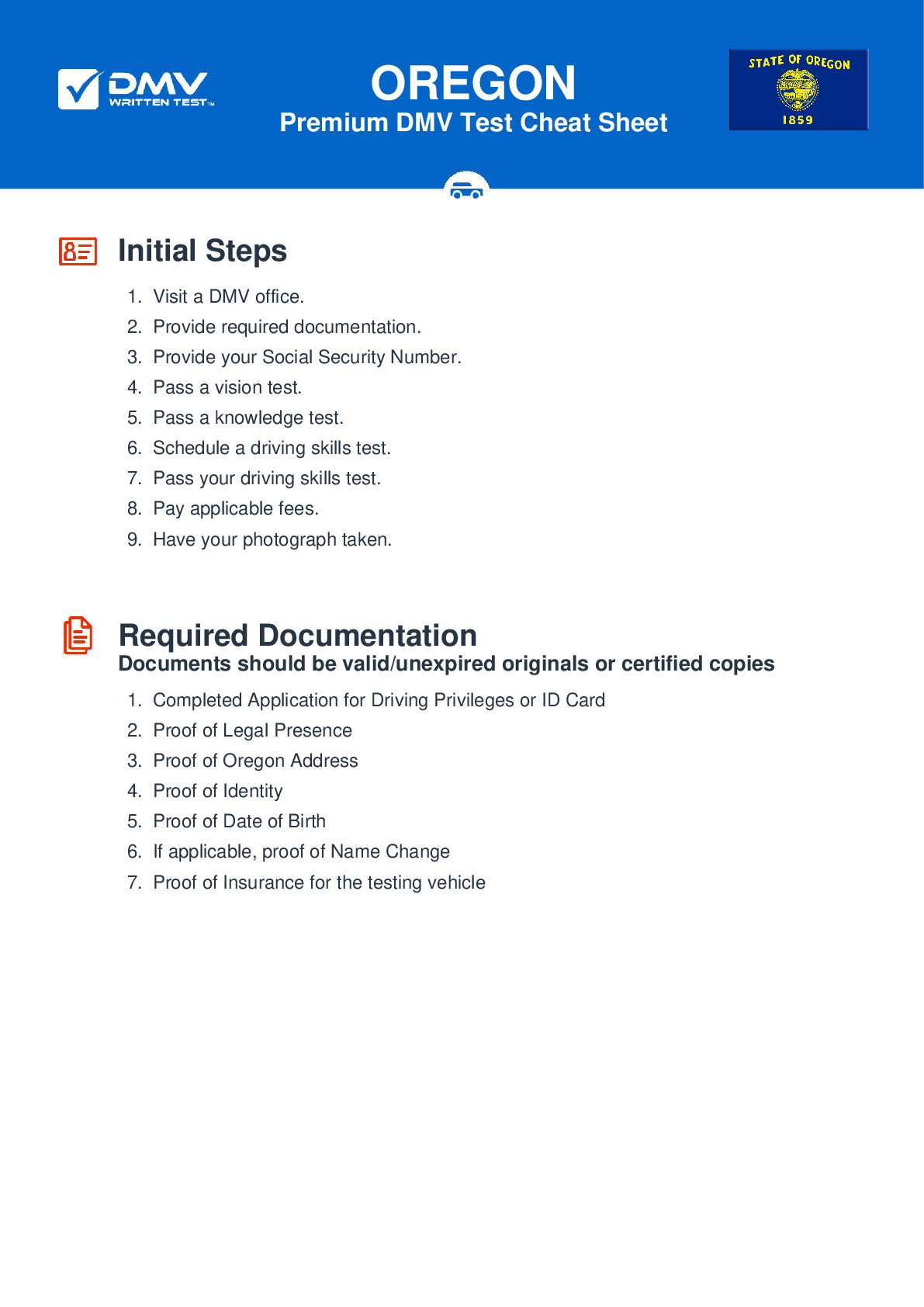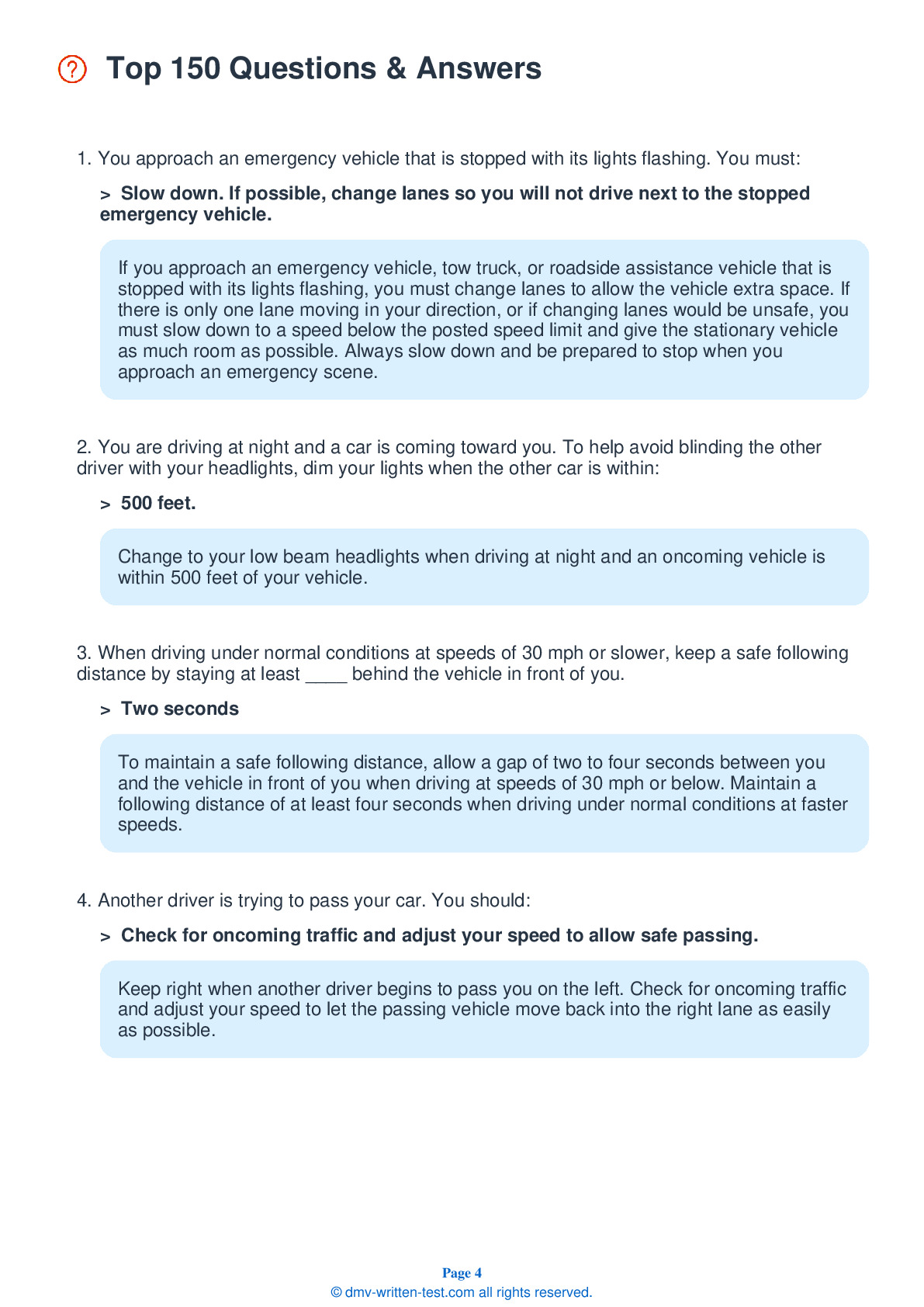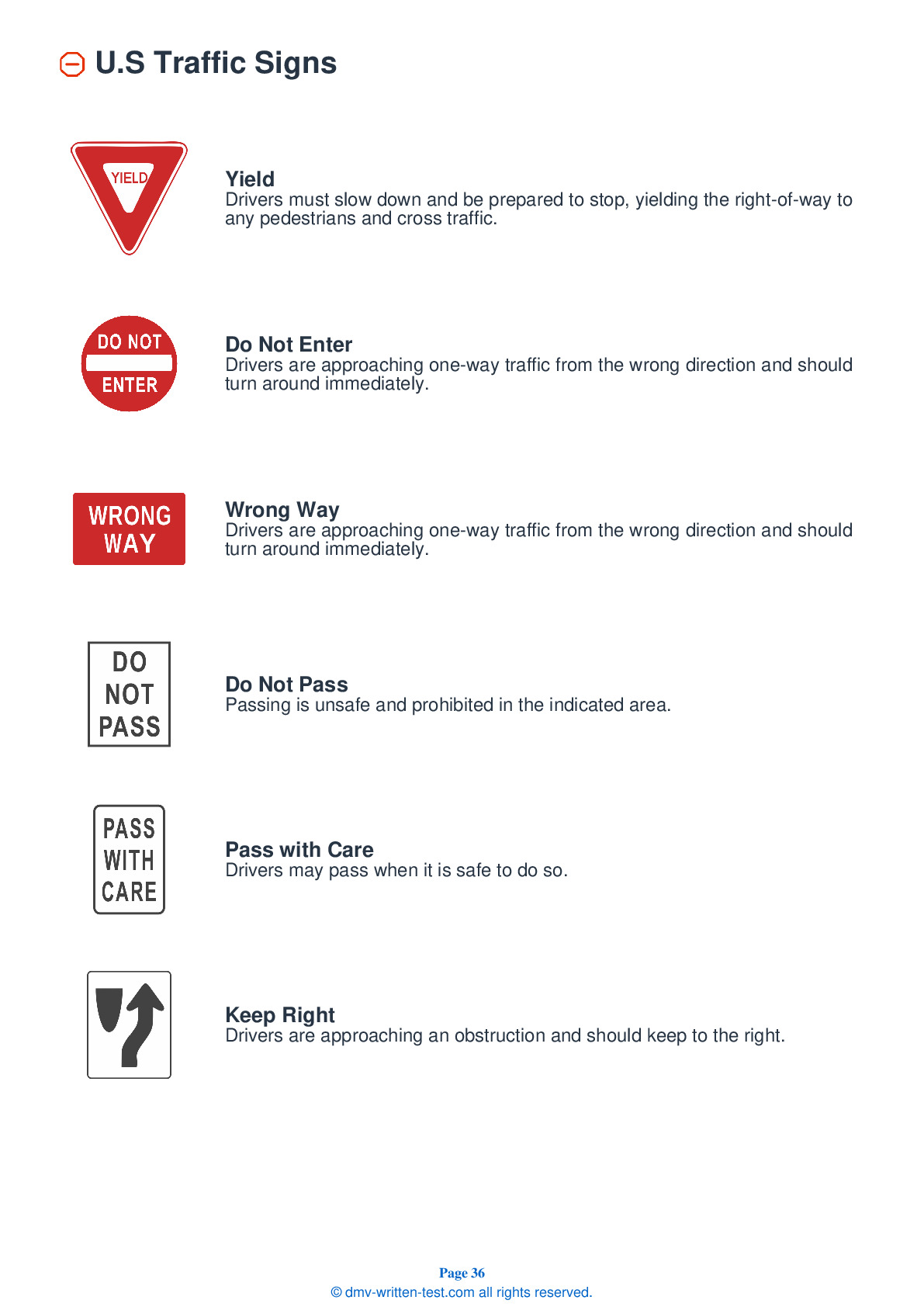2025 Oregon Permit Test 5
The following questions are from real DMV written tests. These are some of the actual permit questions you will face in Oregon. Each permit practice test question has three answer choices. Select one answer for each question and select "grade this section." You can find this button at the bottom of the drivers license quiz. For a complete list of questions and answers for Oregon please visit https://cheat-sheets.dmv-written-test.com/en/oregon/car.
Number of Tests
Number of Question
Passing Score
1. This road sign means:

Explanation
This sign warns that pavement is slippery when wet. In wet conditions, you should reduce your speed, avoid braking or changing direction suddenly, and increase the distance between your vehicle and the one ahead.
2. Taking drugs along with alcohol:
Explanation
Drugs (including illegal, prescription, and over-the-counter medications) can affect your brain function and impair your ability to drive safely. Combining alcohol with other drugs will increase the risk of a crash.
3. What kinds of drugs can affect your driving ability?
Explanation
Many kinds of drugs can impair your ability to drive. This includes illegal drugs and legal prescription or over-the-counter medications. It can be a criminal offense to drive while impaired by any drug.
4. You are driving at night and a car is coming toward you. To help avoid blinding the other driver with your headlights, dim your lights when the other car is within:
Explanation
Change to your low beam headlights when driving at night and an oncoming vehicle is within 500 feet of your vehicle.
5. You may not park:
Explanation
There are a number of locations where it is unlawful to park, including on a crosswalk or in a marked bicycle lane. When parking on the street, you must be within 12 inches of the side of the road.
6. Hydroplaning is usually caused by:
Explanation
Your tires become less effective at clearing water from the road as you increase your speed. If you drive too fast, they may lose their grip entirely, leaving the vehicle sliding on a film of water. This is known as "hydroplaning."
7. What should you do if your vehicle’s right wheels leave the pavement?
Explanation




